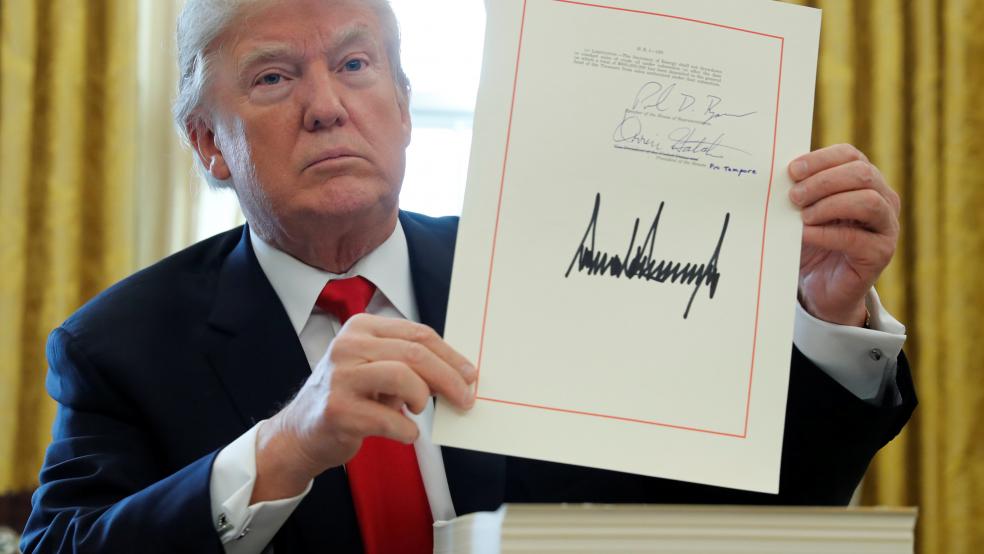Get ready, tax geeks. The American Enterprise Institute, a right-leaning think tank, has just launched a new blog series examining the impact of the Trump tax reform.
“Clearly, the only thing certain about the TCJA is its uncertainty,” AEI says in its introduction. “What answers do we have so far, and what do we hope to learn going forward? Has the TCJA sparked the growth it promised? Did it in fact make the tax code simpler and fairer? Is it a giveaway to the rich, or are all Americans benefiting? Is the TCJA a success or a failure, or is it too early to tell?”
A First Crack
In the first post in the series, Aparna Mathur, an AEI resident scholar in economic policy studies, looks at whether the tax changes have delivered on a couple of big promises — namely, that they would boost business investment and worker wages.
Mathur says that both physical capital formation and equipment investment have grown since the law was passed, but that growth appears in line with previous trends. Similarly, wages have risen but it’s hard to connect that directly to the tax cuts.
On the other hand, Mathur writes, corporations have been bringing back more overseas profits and the number of corporate inversions, in which businesses restructure to relocate their official headquarters in a foreign country, are down (though there’s evidence that trend started before the tax law was passed).
A Complex Story
Mathur concludes that it’s just too soon to tell whether the tax overhaul worked as intended. “Impacts on investment and wages are typically shown to occur over much longer periods, definitely longer than a year and a half,” she writes.
But — and this is a big but — she argues that there’s another, less obvious reason the effects of the tax law aren’t showing up in the data yet: “the TCJA did not simply provide a massive corporate rate cut for companies.”
Yes, the law did slash the federal corporate tax rate from 35% to 21%. But it also included an alphabet soup of other changes to the international tax system that applies to multinational corporations — provisions known by the acronyms GILTI, BEAT and FDII that Mathur says “added a ton of complexity and uncertainty to the corporate tax code.”
Those rules have been hard to figure out, potentially leading companies to hold off on investment decisions until the tax implications are clarified. “Clearly, companies are dealing with a lot more than a simple corporate rate cut,” Mathur says. (New York Times economics reporter Jim Tankersley notes that “when the White House forecast effects of the tax cuts on investment and GDP in late 2017, it ... did not include any of those international provisions.”)
Outside Factors in Play
On top of all that, Mathur adds, the tax cuts added to the deficit, which could still impact economic growth. And the changes are “playing out in an economy that is facing trouble from the possible escalation of tariffs and a trade war and from uncertain global economic conditions.” (That’s unquestionably true, and we’ll wager it’s an argument that supply-side economists and other tax-cut supporters will be making for years to come.
Mathur urges caution before judging the tax law to be a failure: “In short, teasing out the impacts of the largest tax overhaul the country has seen in decades on households and the economy will take time,” she writes. “So let’s be patient. It’s too early to give up on the Tax Cuts and Jobs Act.
The bottom line: It’s still early, but Mathur makes a strong case that the Tax Cuts and Jobs Act didn’t simplify the tax code in the way many reformers would have liked — and the data thus far don’t show the gains that its advocates said would be coming.





